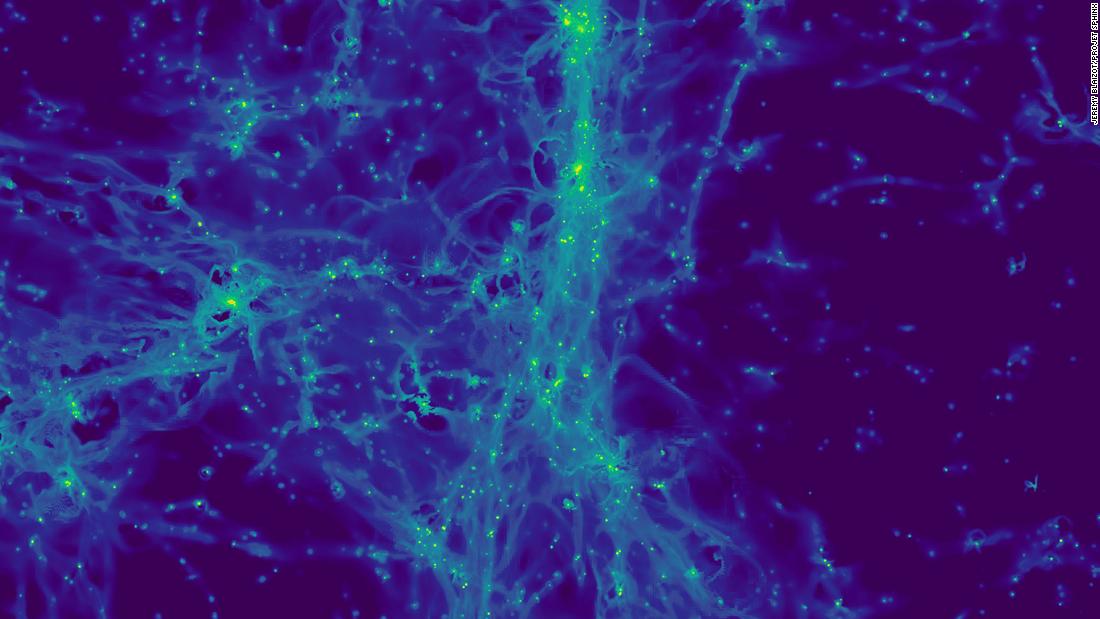
Cosmological models had long predicted the existence of filaments – gas in which galaxies are created – but no images of the phenomenon had been taken except near quasars, astronomical objects of high brightness found in the centers of some galaxies. . .
The cosmic web is the building block of the cosmos – consisting mainly of dark matter and laced with gas – upon which galaxies are built.
Using the MUSE instrument, scientists studied an area of the sky called the Hubble Ultra-Deep Field for about 140 hours, for eight months. The area is where the deepest images of the cosmos were once obtained.
“The galaxies in the sky and the universe aren’t the same everywhere,” lead author Roland Bacon, an astrophysicist and researcher at the Center de Recherche Astrophysique de Lyon in France, told CNN.
“Galaxies in the early days of the Universe were formed by gas. Gas, primarily hydrogen, is the fuel that makes up stars and ultimately the Milky Way,” he explained. “The galaxies will form in these very long gas filaments.”
There was some circumstantial evidence that gas was present in the region, Bacon said. When the team studied quasars, they sometimes found that the light was obscured, which they said was due to the presence of gas.
The team’s analysis of the images taken with the telescope revealed light from the hydrogen filaments.
“The best explanation is that the light we see in the images is not due to the ultraviolet background – it comes from billions of tiny galaxies that form stars, called dwarf galaxies,” Bacon said.
Our large galaxy, the Milky Way, is orbited by more than 50 other smaller galaxies, including dwarf galaxies.
Where the Milky Way is now home to between 200 billion and 400 billion stars, dwarf galaxies contain between 100 million and several billion.
Dwarf galaxies merged in the early universe to form the larger galaxies that populate it today, including the Milky Way.
“We cannot see these galaxies because they are intrinsically faint and too far away: we observe them 2 billion years after the big bang – at a distance of 11 billion light years. But there are so many of them that we see the integrated light produced by them,” “he said.
